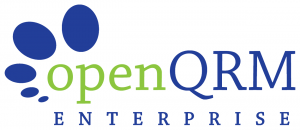Difference between revisions of "Main Page"
| Line 8: | Line 8: | ||
=== Tutorial Categories === | === Tutorial Categories === | ||
| − | + | Learn about specific features that openQRM has to offer: | |
{| class="wikitable" | {| class="wikitable" | ||
|+ | |+ | ||
| − | + | ||
|[[:Category:Automate|Automate]] | |[[:Category:Automate|Automate]] | ||
|[[:Category:Amazon EC2|Amazon EC2]] | |[[:Category:Amazon EC2|Amazon EC2]] | ||
Revision as of 12:36, 23 November 2020
Right now there are 17 articles available
The openQRM platform manages a data centre's infrastructure to build private, public and hybrid infrastructure as a service cloud. openQRM orchestrates storage, network, virtualisation, monitoring, and security implementations technologies to deploy multi-tier services (e.g. compute clusters) as virtual machines on distributed infrastructures, combining both data centre resources and remote cloud resources, according to allocation policies. The openQRM project is developed and owned by OPENQRM AUSTRALIA PTY LTD.
For an overview of openQRM features, visit the openQRM website
Tutorials & Webinars
Tutorial Categories
Learn about specific features that openQRM has to offer:
Amazon EC2, Android, Backup, BackupPC, Bare Metal, Cloud, Data Centre, Deployment, Debian, E-Commerce, High-Availability, Hyper-V, IaaS, KVM, LVM, Magento, Management, Mantis BugTracker, Monitoring, Nagios, Openstack, Orchestration, Puppet, Setting up, Update, Virtualisation, VM, VMWare, vSphere, Xen
- Tutorial Index - Written Step-by-step walkthroughs on openQRM features
- YouTube Webinars - Learn with step-by-step walkthrough video webinars and How-Tos
Downloads
Latest openQRM Enterprise Edition (v5.3.8)
Latest openQRM Community Edition (v5.3.8)
Installation
How to install openQRM on a Debian installation
Using openQRM Enterprise
We have included all openQRM documentation on this wiki
If are new to openQRM, we would recommend referencing the following documentation:
